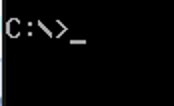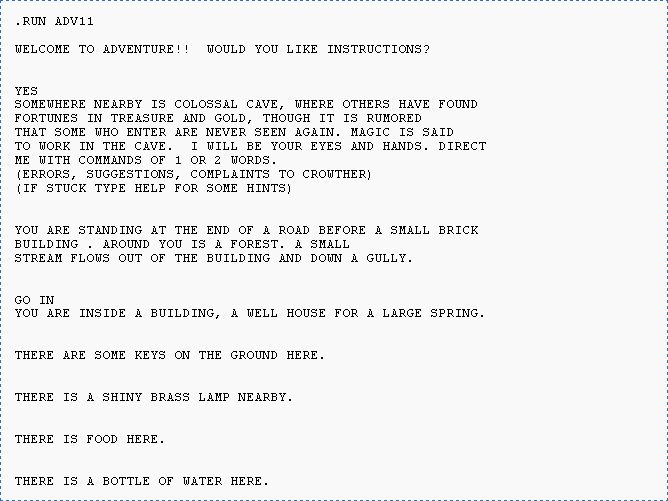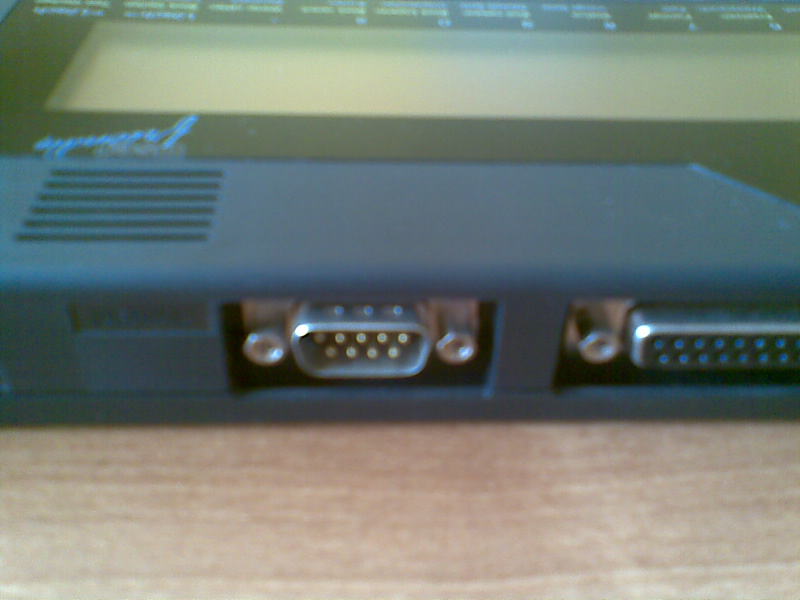HP LX’s hinges

Recently, I had a conversation with Chris S, a vintage stuff collector who told me that he'd never had an HP LX because of the (in)famous problems with hinges. To calm his worries, I promised to come with a link to a great source of all-things-HPLX knowledge. Here it is: an article about how to repair broken hinges, latches, displays and keyboards, and how to prevent future hinge problems - at Hermocom.
Update <2013.07.11>:
MCbx (see comments to this post) has just sent me a link to his updated page about HP 200LX. Lots of useful tips, programs and links to resources over the Web. Here it is:
http://computers.mcbx.netne.net/portables/200lx/index.htm
DOS palmtops

Once upon a time, one of the readers, jerome, asked me to write a comparison of HP LX palmtops. While I consider it a little pointless (the 200 LX would take all the gold), a review of all then-popular palmtops with DOS onboard wouldn't be a bad idea, I guess. An exact comparison would make little sense though - to be fair, Atari Portfolio would be crushed by machines such as the abovementioned HP 200 LX - so I'll try to tell the story in a different way and show the pros and cons of each computer.
First of all, take a look at the List of DOS-based palmtop computers. I think it's the most comprehensive and informative place on the Internet, and the list is really overwhelming. Actually, most of the brands are clones and the choice today (e.g. when hunting on eBay) is limited to only a few major names.
Atari Portfolio
The winner of our survey, the Portfolio is a machine that "has that something". I haven't heard of any other DOS-based palmtop with such a cult following. Not 100% DOS-compatible, Pofo earned lots of programs written for it and even kind of a "scene" back in the days. The remainings of that hype can still be found in the Downloads section of The Portfolio Website.
That said, Atari Portfolio is rather a "plastic-and-silicon teddy bear" than a tool that could be used on a daily basis. Its main flaws include:
- compatibility issues (operating system, screen) resulting in most of the DOS software failing to run
- fallibility - you can't tell if your data will be there tomorrow; if you want to have a peaceful sleep, better invest in a RAM card
- crappy built-in software; you don't have to use it, but if you want to have a PDA, there's a risk you'll be driven crazy by its peculiarities (my favourite is the first day of a week fixed to Sunday)
- too little memory (it's possible to expand RAM to 640 KB, but out of the box you get only 128 KB for internal disk and system RAM)
But keep in mind, that twenty years ago it was widely used by professionals, sometimes under heavy-duty conditions (in manufacturing, forestry and so on). So maybe I'm just biased?
The Portfolio was commonly used as a "typewriter". For long I was skeptical about its keyboard, but eventually I discovered that with key click turned on typing gets quite comfortable (but the battery lifespan decreases). There's even an incredible text by Rowby Goren about how to touch-type on the Portfolio and use it while having a walk. The screen is small (in terms of rows and columns), but characters are large and easy to read.
HP 95 LX
Produced two years after Atari Portfolio, it's obviously technically superior. With larger RAM, built-in serial interface, twice as big screen and smaller size, it seems to be no competitor for the Portfolio. But talking about the usability, its superiority is not that obvious. First, it has the worst keyboard among all the palmtops reviewed here. Not only does it seem to be taken from one of HP's calculators, but also the layout requires much time to at least get familiar with, not to mention fast typing. Built-in software is not much better that that of Portfolio - excluding the spreadsheet (real Lotus 1-2-3 v. 2.2) and excellent calculator. Besides, I don't know if it's common in this model, but my 95 LX works very bad with rechargeable batteries; it seems to me that its voltage meter is set too high and it can't deal with rechargeables' steep discharge curve. The "battery low" message appears suddenly and it's impossible to work anymore. Moreover, when left for a few days, the computer can lose all the data as the batteries get drained. I read somewhere, that I'm not the only one, but maybe this issue appears only in some machines.
HP 95 LX is equipped with MS-DOS 3.22, and it's MS-DOS, not a custom DOS like Portfolio's DIP-OS. This allows for launching more DOS programs, I even managed to play ZZT 🙂 But the screen is still incompatible with CGA, so forget graphic games. There is some software written specifically for the 95 LX, that can be downloaded from RetroIsle.
HP 200 LX
HP 95 LX's younger brother is considered by many as the best DOS-based palmtop. In the 95 LX's skin (the same size and weight) is a regular PC XT with MS-DOS 5.0 and CGA-compatible display. You can run most of the DOS software on it, yet there are lots of 200 LX-specific programs. The keyboard however remains almost unchanged, making it a great PDA (superb built-in PIM software!), but a mean word processor.
The drawback of an 80x25 screen in a small case is the size of characters. Imagine letters half the size of those on 95 LX's screen - it's a chore when you use text-mode applications.
Tidalwave PS-1000 and clones
It's hard to find the original Tidalwave PS-1000, but the company was really prolific when it comes to manufacturing under other brand names. Much more common are Zeos Pocket PC (in the USA), Highscreen Handy Organizer and Peacock Palmtop PC (in Germany). They are identical, the only difference being the operating system and keyboard layout (German vs. American).
Larger than the Portfolio, these machines in fact are rather (much) smaller laptops than pocket-sized PDAs like the HP LX series. The keyboard is really comfortable, if you get used to accidental turning off the computer instead of hitting backspace (completely harmless). The screen is CGA compatible, with 80 columns per 25 rows of text, but it's larger than HP 200 LX's, so the letters are easier to read (but they are still much smaller than on HP 95 LX's or Portfolio's display).
Built in is MS-DOS 5.0 with MS Works and Race Pen (PIM software). The applications are quite uncomfortable and can't beat HP 200 LX's suite, but that's my opinion, of course. "Tidalwave-oids" are the only machines equipped with a programming language - MS QBASIC interpreter.
Tidalwave has both serial and parallel ports, but (as many other palmtops) miniature, custom versions rather than standard, which would be ideal. As for now, I couldn't find the pinout of these ports, so I don't know about running external software on this machine. I guess that - as it is with HP 200 LX - most of the programs should run flawlessly.
Others
There are a few more models, but having never seen them I can't write anything more than: "boy, they are rare". Judging by the parameters, I would recommend one of the "Tidalwave-oids" rather than Poqet PC or Sharp PC-3000/3100. The latter two have MS-DOS 3.30 installed and CGA-compatible display, so most of DOS apps should run.
Games: A for Adventure

One of the fields where vintage palmtops can easily compete with modern gadgets, is adventure gaming. I mean those games where you type "examine box" and the computer tells you that there is a small piece of paper inside. Or something else. A lot of games were written for portable computers in the heyday of adventure gaming (80's and the beginning of 90's).
If you don't know, what these "adventures" are about, read the excellent introduction by Joe W Aultman or an exhausting beginner's guide at Brass Lantern.
Psion Organiser
Yes, there are adventures for the Organiser. You may download a port of Colossal Cave Adventure and an original game "City of Alzan" from The Psion Organiser II site. They should run on an CM! (haven't tested though)
Psion Series (SIBO)
With these machines you can access all Infocom titles (.IDF format) thanks to the ITF Interpreter by Bryan Scattergood. You can download it as well as Zork I from BioEddie's.
Psion Series (EPOC)
For Psion 5 (and higher) there is FrotzS5 Z-Code interpreter. This lets you play hundreds of games stored on Interactive Fiction Archive website and elsewhere on the Internet. You may also want to take a look at this page, where you can find a brief installation info together with an entire Zork trilogy for download. (Here's an archived instruction manual for FrotzS5.)
Amstrad NC
There are a few amusing adventure games available from Tim's Amstrad NC Users' Site, like "Crystal of Nebumeth". NC's full-sized keyboard and large screen make it really comfortable to play adventures even for a long time. Amstrad has a BBC BASIC interpreter built in, so new games may be easily written (the source codes of existing games may help you get started).
Atari Portfolio
You can download a few games from atari-portfolio.co.uk. I don't think that any DOS Z-code interpreter would run on a Portfolio, but I didn't even try. Maybe there is a lightweight version, capable of running on a very basic XT?
EDIT: There is an interpreter with a few games (including Zork Trilogy). You can download it from PofoWiki's download section (infocom.zip).
HP LX
There are some titles on the S.U.P.E.R. site. You need to be patient, though, and click through those hundreds of programs listed (no categories). DZip (16-bit DOS version) should run on every LX (most likely on 200LX).
Palm
There are a few Z-code interpreters for Palms, like Pilot Frotz or Pilot Zip, but I've used only one of them - Frobnitz. It supports all Z-code file formats (except V6) and is quite powerful, but larger games are slow like hell on my IIIe.
Useful links:
- Interactive Fiction Archive with lots of games, interpreters, utilities, articles and so on
- Interactive Fiction Competition where you may find excellent new titles every year
- Brass Lantern - for interactive fiction fans
Vintage palmtop and a Linux PC

I announced a text about games, but meanwhile another idea came to my mind. Surfing the Web I encountered many questions about uploading files to a vintage palmtop, asked by the fresh owners of Portfolios, HP's etc. While it's fairly easy to do in Windows - just launch HyperTerminal, set up the connection and click "send" icon, remembering to choose a proper protocol (XMODEM usually) - I've never seen any tips about doing it with Linux.
I know two ways to send/receive files to/from a palmtop with an RS-232 port (I use it with HP 95LX and NC 100, but it would work with Portfolio). This time nothing about Psion (hint: try plptools).
1. The easy way
Install minicom (full-screen but text-based) or cutecom (with GUI). Remember to set correct connection parameters (56700 baud would be ok for an HP, but only 9600 for an NC 100). With minicom it goes like this:
minicom -b 57600 -D /dev/ttyS0
for 57600 baud at the first serial port. Important notice: nowadays computers (laptops especially) lack an RS-232 port. In this case an RS-232<->USB converter comes in handy. Mine is a cheap, Chinese no-name and it works well with my Ubuntu. When using such converter, your device is /dev/ttyUSBx (where x is a digit, usually 0). For diagnostics you may run dmesg | tail and check the name of the device (if any appears).
If you want to use cutecom, just run the program and set the desired parameters in the main window.
On your palmtop, set the configuration (on 95LX you only need to set the proper baud rate, leaving everything else unchanged; on an NC the defaults are just fine, just press Function-S to enter the terminal program). After connecting, choose the file to be sent from the PC. Now you need to set up the palmtop to receive the file. On an HP it's straightforward, just choose it from the menu. On an NC press Function-L to invoke the file list, then press Menu and T (Transfer). Choose the name under which the file will be saved on your computer. Remember to choose XMODEM as the protocol.
Sending files from the palmtop to the PC is obvious.
2. The way of the warrior
Here we'll use the palmtop as a Linux terminal. No need to install any communication software on the PC, but the package called lrzsz will be required. It provides, among others, two programs: sx and rx for sending and receiving files, respectively.
First, run getty on your Linux machine:
getty 57600 /dev/ttyS0
Configure your palmtop as described above. On an HP 95LX you would want to set the terminal type to ANSI and turn wrapping on, but that's not necessary. After establishing the connection you will see the Linux login message prompting for password. Log in to your account (notice: serial connections are slow, so be patient). From the command line type sx filename to send a file from the PC to the palmtop. Set up the palmtop to receive files as described above. If you want to transfer files to the PC, use rx.
Log out and close the connection.